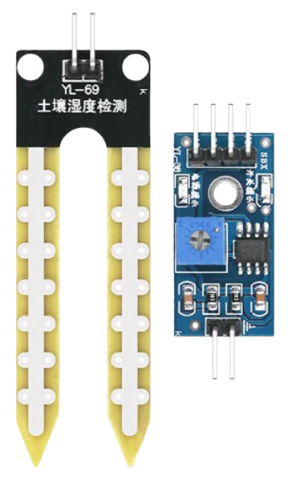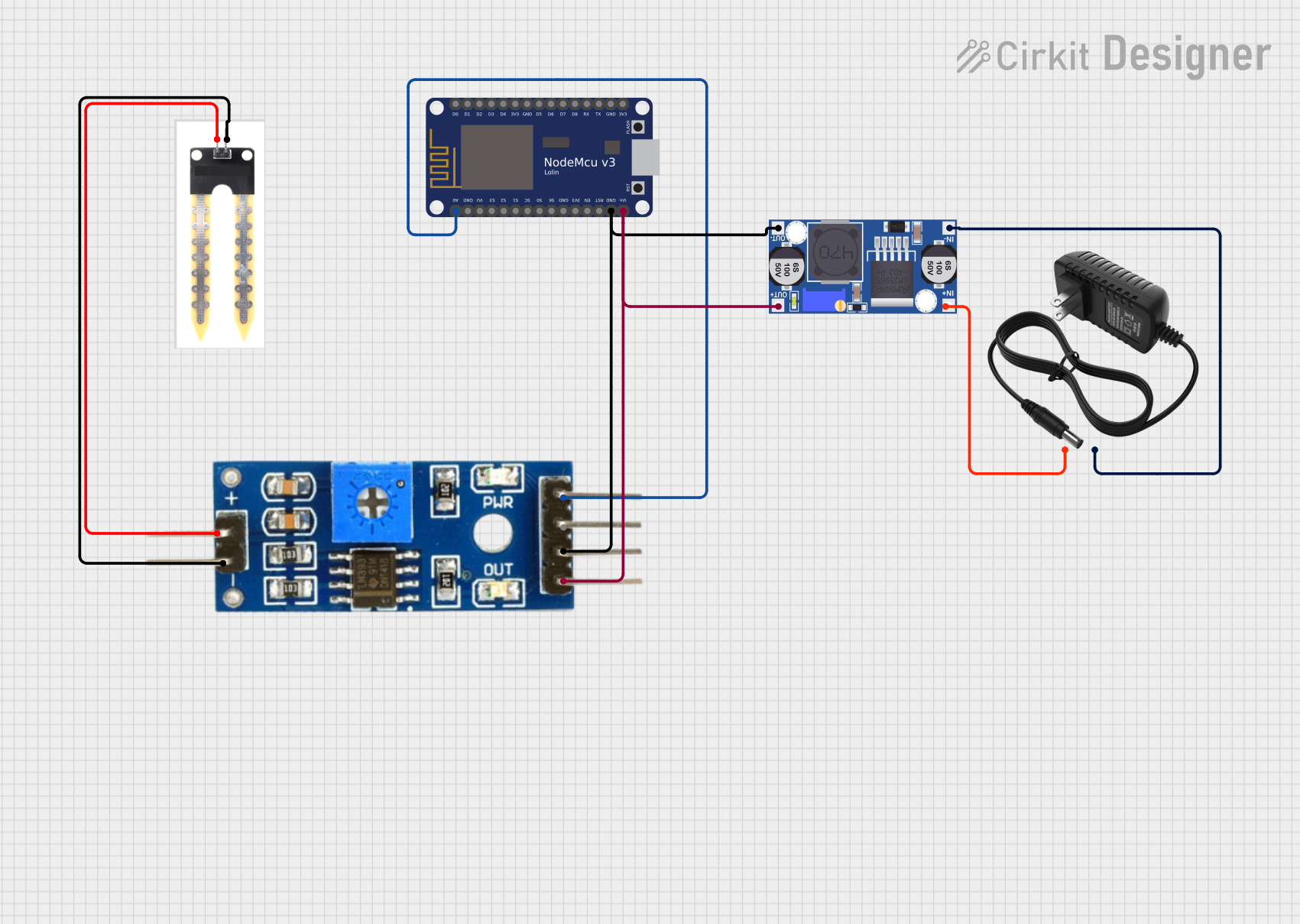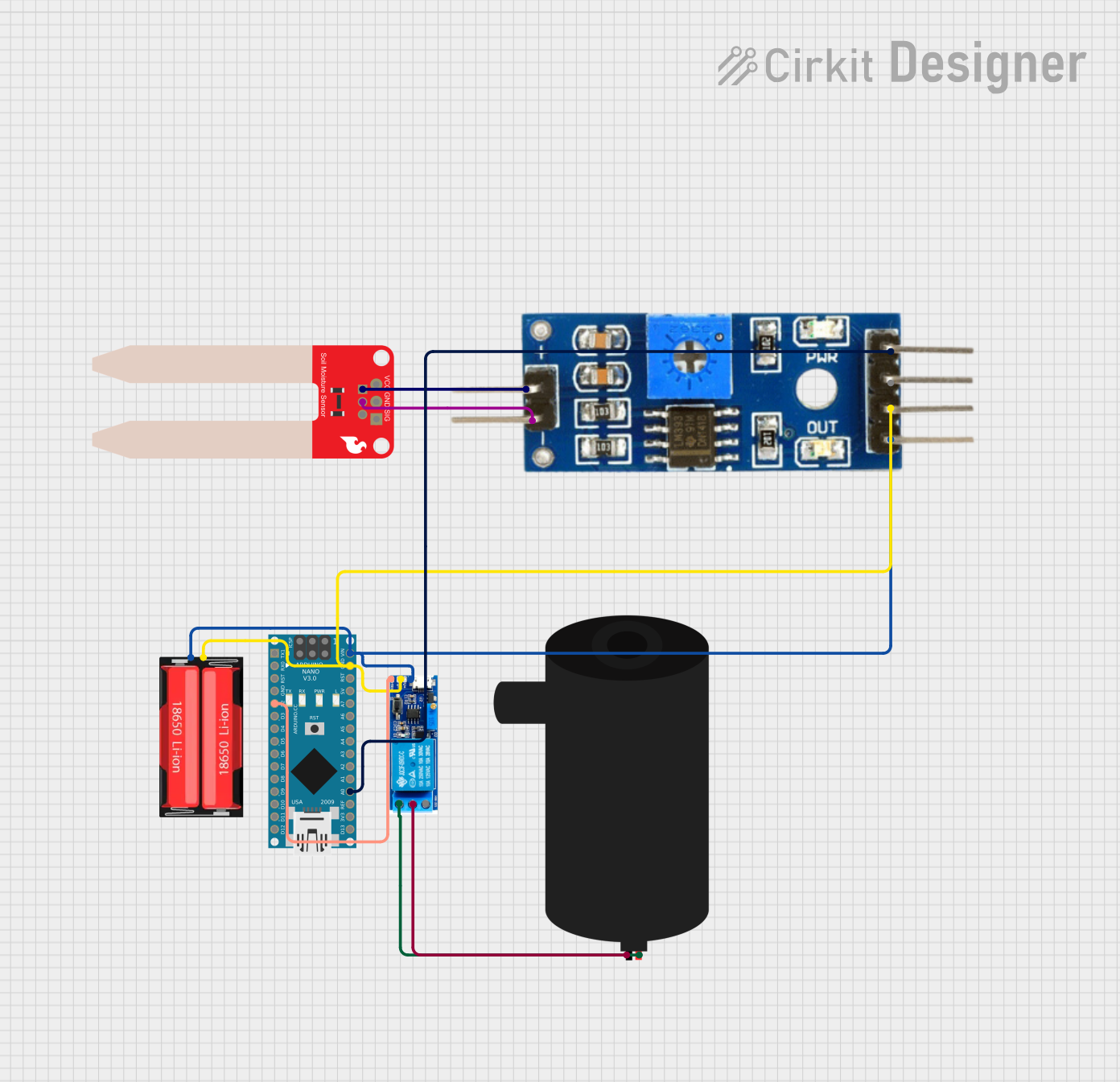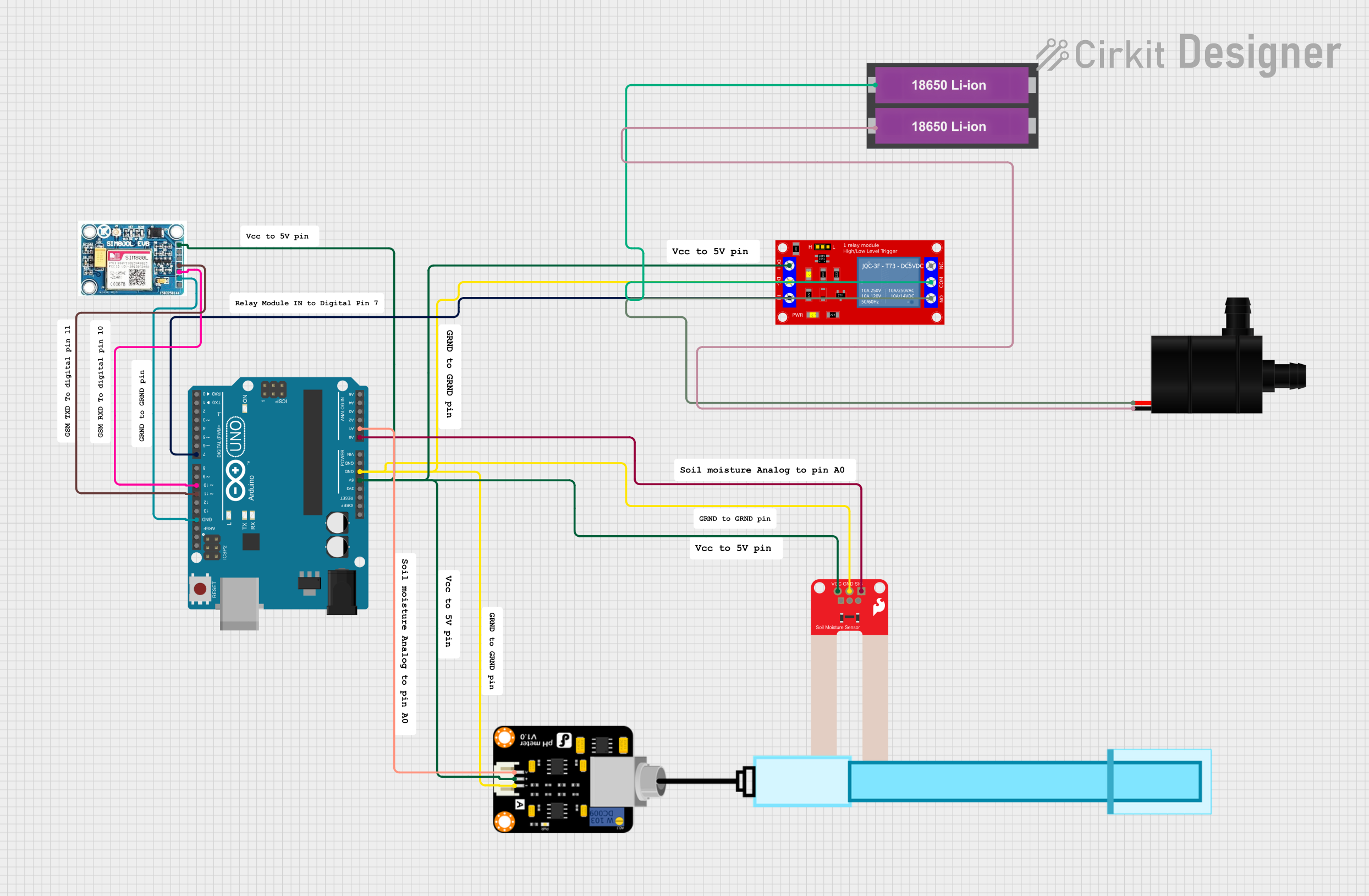
How to Use Soil Moisture Sensor Module: Examples, Pinouts, and Specs

 Design with Soil Moisture Sensor Module in Cirkit Designer
Design with Soil Moisture Sensor Module in Cirkit DesignerIntroduction
The Soil Moisture Sensor Module is a device designed to measure the moisture content in soil. It provides both analog and digital outputs, making it versatile for various applications. This module is widely used in agricultural, gardening, and environmental monitoring projects to automate irrigation systems, monitor soil conditions, and optimize water usage.
Explore Projects Built with Soil Moisture Sensor Module

 Open Project in Cirkit Designer
Open Project in Cirkit Designer
 Open Project in Cirkit Designer
Open Project in Cirkit Designer
 Open Project in Cirkit Designer
Open Project in Cirkit Designer
 Open Project in Cirkit Designer
Open Project in Cirkit DesignerExplore Projects Built with Soil Moisture Sensor Module

 Open Project in Cirkit Designer
Open Project in Cirkit Designer
 Open Project in Cirkit Designer
Open Project in Cirkit Designer
 Open Project in Cirkit Designer
Open Project in Cirkit Designer
 Open Project in Cirkit Designer
Open Project in Cirkit DesignerCommon Applications and Use Cases
- Automated irrigation systems
- Smart gardening projects
- Soil condition monitoring in agriculture
- Environmental monitoring systems
- Educational projects involving Arduino or other microcontrollers
Technical Specifications
The Soil Moisture Sensor Module typically consists of two main parts: the sensor probe and the control board. Below are the key technical details:
General Specifications
- Operating Voltage: 3.3V to 5V
- Output Types: Analog and Digital
- Current Consumption: < 20mA
- Dimensions: Varies by model, typically ~60mm x 20mm
- Output Voltage Range (Analog): 0V (dry) to 5V (wet)
- Adjustable Sensitivity: Via onboard potentiometer
- Interface: 4-pin header (VCC, GND, A0, D0)
Pin Configuration and Descriptions
| Pin | Name | Description |
|---|---|---|
| 1 | VCC | Power supply input (3.3V to 5V) |
| 2 | GND | Ground connection |
| 3 | A0 | Analog output pin, provides a voltage proportional to soil moisture level |
| 4 | D0 | Digital output pin, HIGH or LOW based on the moisture threshold (adjustable) |
Usage Instructions
How to Use the Component in a Circuit
Connect the Module:
- Connect the VCC pin to the 3.3V or 5V power supply of your microcontroller.
- Connect the GND pin to the ground of your microcontroller.
- Connect the A0 pin to an analog input pin on your microcontroller (e.g., A0 on Arduino UNO).
- Optionally, connect the D0 pin to a digital input pin if you want to use the digital output.
Adjust the Sensitivity:
- Use the onboard potentiometer to set the moisture threshold for the digital output. Turn clockwise to increase sensitivity (detects wetter soil) or counterclockwise to decrease sensitivity (detects drier soil).
Read the Output:
- The A0 pin provides an analog voltage that varies with soil moisture. A higher voltage indicates wetter soil.
- The D0 pin outputs HIGH (1) when the soil moisture is above the threshold and LOW (0) when below.
Important Considerations and Best Practices
- Avoid prolonged exposure of the sensor probe to water, as it may corrode over time. Use corrosion-resistant probes for long-term projects.
- Ensure proper calibration of the potentiometer for accurate digital output.
- Place the sensor probe at the desired depth in the soil for consistent readings.
- Use a pull-up resistor on the D0 pin if required by your microcontroller.
Example Code for Arduino UNO
Below is an example of how to use the Soil Moisture Sensor Module with an Arduino UNO:
// Define pin connections
const int analogPin = A0; // Analog output pin connected to A0
const int digitalPin = 2; // Digital output pin connected to D2
const int ledPin = 13; // Built-in LED for indication
void setup() {
pinMode(digitalPin, INPUT); // Set digital pin as input
pinMode(ledPin, OUTPUT); // Set LED pin as output
Serial.begin(9600); // Initialize serial communication
}
void loop() {
// Read analog value from the sensor
int analogValue = analogRead(analogPin);
Serial.print("Analog Value: ");
Serial.println(analogValue);
// Read digital value from the sensor
int digitalValue = digitalRead(digitalPin);
Serial.print("Digital Value: ");
Serial.println(digitalValue);
// Turn on LED if soil is dry (digital output is LOW)
if (digitalValue == LOW) {
digitalWrite(ledPin, HIGH);
} else {
digitalWrite(ledPin, LOW);
}
delay(1000); // Wait for 1 second before the next reading
}
Troubleshooting and FAQs
Common Issues and Solutions
No Output or Incorrect Readings:
- Ensure the sensor is properly connected to the microcontroller.
- Verify that the power supply voltage is within the specified range (3.3V to 5V).
- Check for loose or damaged wires.
Corrosion of Sensor Probes:
- Use corrosion-resistant probes for long-term projects.
- Avoid leaving the sensor in waterlogged soil for extended periods.
Inconsistent Readings:
- Ensure the sensor is placed at a consistent depth in the soil.
- Calibrate the potentiometer for accurate digital output.
Digital Output Always HIGH or LOW:
- Adjust the potentiometer to set the correct moisture threshold.
- Verify that the D0 pin is properly connected to the microcontroller.
FAQs
Q: Can this sensor be used with a 3.3V microcontroller like ESP8266 or ESP32?
A: Yes, the sensor operates at 3.3V to 5V, making it compatible with 3.3V microcontrollers.
Q: How do I prevent the sensor from corroding?
A: Use corrosion-resistant probes or coat the sensor with a protective layer (e.g., waterproof paint) for long-term use.
Q: What is the difference between analog and digital output?
A: The analog output provides a continuous voltage proportional to soil moisture, while the digital output is a binary signal (HIGH or LOW) based on the moisture threshold set by the potentiometer.